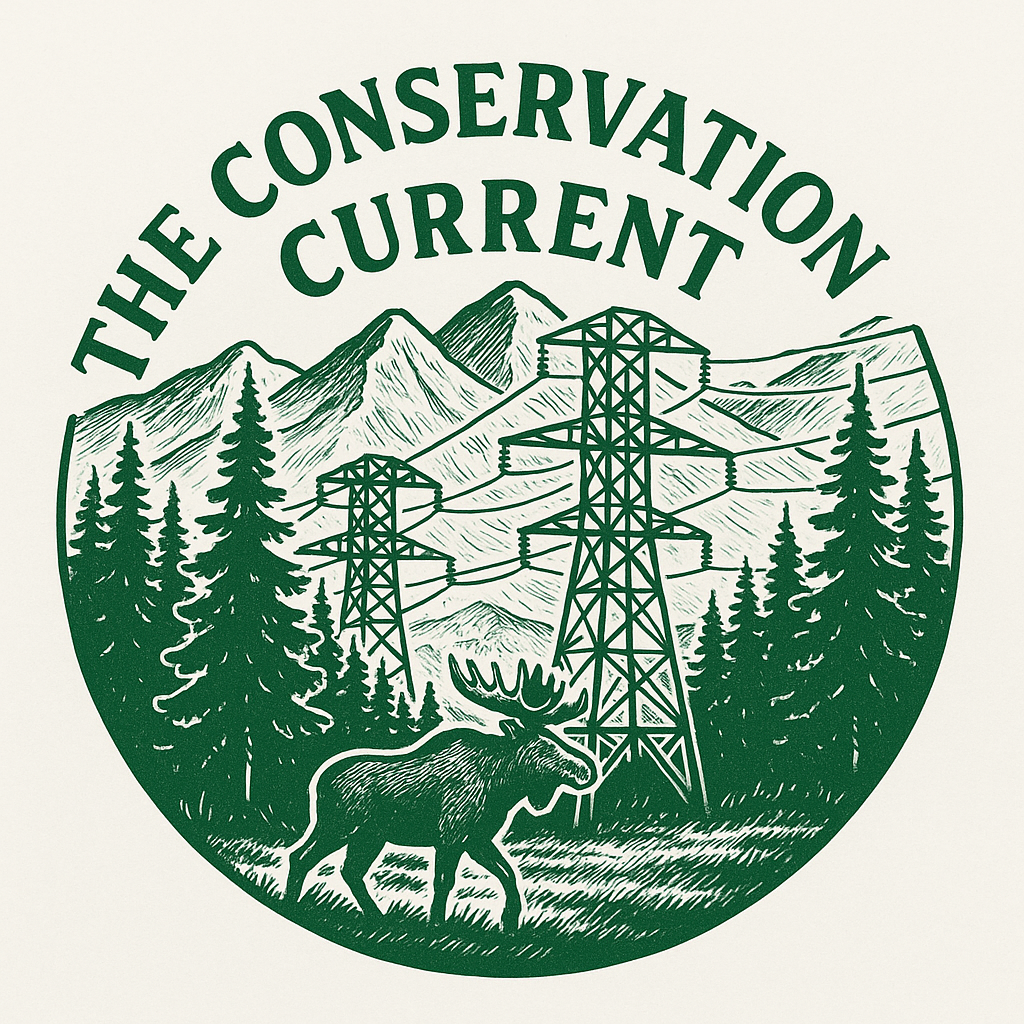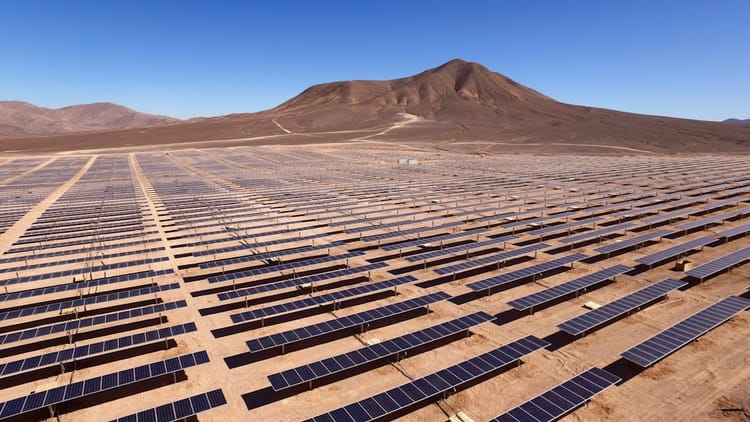Orchestrating Energy to Protect Public Land

I spent the week at Dreamforce, listening to leaders of Base Power (Justin Lopas), Crusoe (Chase Lochmiller) and Emerald AI (Varun Sivaram) unpack how batteries, compute, and software could talk to each other. I then attended an AI policy discussion with Pete Buttigieg. It got me thinking. On my walk back to the train, it hit me: maybe the future of energy isn’t horsepower, it’s orchestration.
At 6:47 p.m., the grid usually holds its breath. The sun has sunk behind the horizon, solar fades, air conditioners stretch, ovens warm up. In many places, that moment is the loudest point of the day, for utilities, for planners, for the land that lies near new corridors and peaker pads.
Thanks for reading The Conservation Current! Subscribe for free to receive new posts and support my work.
Now add a blunt truth. Artificial intelligence is about to lean hard on the wires. In the United States, a Lawrence Berkeley National Laboratory report for the Energy Department says data-center load could double or even triple by 2028, and industry tallies suggest these facilities may reach up to twelve percent of U.S. electricity by 2030. Those loudest points of the day, will become louder, and more expensive to households.
But what if nothing ever sounded? What if, instead, the system simply glided through the evening with grace? That’s the promise of a silent substation. A system so orchestrated that strain never becomes crisis.
The problem behind the noise
Every time demand spikes, the fallback has long been hard infrastructure: build another gas generator, widen a corridor, erect steel in places that often overlap with wild lands, sacred sites, or bird migration pathways. Public lands become collateral in a fight to keep the lights on.
We’re used to thinking conservation and energy are opposites. But what if the frontier of conservation is quieting the grid?
Meet the orchestra
Three companies are quietly auditioning for instrumental roles in this future:
- Base Power in Texas, which installs home-scale battery systems that double as flexible grid assets. When demand rises, those batteries discharge; when supply is high, they recharge. The home becomes a node in a distributed power network.
- Crusoe, specializing in computing on stranded or flared energy. By placing data centers where energy is otherwise wasted, they reduce pressure on congested grid zones. They can throttle or shift compute usage to assist grid balancing when needed.
- Emerald AI, whose platform choreographs how AI workloads run across data centers, matching compute timing to grid conditions. When electricity is tight, certain jobs slow or pause; when power is abundant, they rebound.
Individually, each is interesting. Together, they begin to form a synergy: a triad of storage, supply, and software, learning to breathe in unison. That choreography is the real story.
How orchestration unfolds
Picture this:
- Forecasting leads
Emerald AI’s platform monitors weather, utility data, regional flows, and compute scheduling. That lets it project demand stress hours ahead, not at the last minute. - Compute yields
If the system senses strain approaching, Emerald triggers nonurgent compute workloads to pause or migrate. The load lightens organically. - Battery response
With compute load reduced, Base Power batteries dispatch from the most critical feeders, homes meaningfully near grid stress points, adding support exactly where it’s needed. - Flexible supply steps in
If there’s still a shortfall, Crusoe’s modular compute farms (often colocated where energy is abundant) pivot. They run on local supply where possible, and if necessary, donate generation capacity back to the local grid, moderating their own consumption or exporting power.
Each step hands off to the next. No one part rushes. No one part overreaches. The peak silently flattens.
When the peak is the quietest hour
If this orchestration succeeds, the system’s loudest challenge, the evening surge, becomes its quietest moment. The grid doesn’t roar, it flows. Fewer new peakers, fewer pipeline spines through wild lands. The only change is subtle: homes hum a little less, servers shift their tasks, and wildlife corridors remain unbuilt.
That’s the paradox: conservation born from coordination, not confrontation.
Challenges in the ensemble
- Forecast errors & wild swings: A sudden heat wave, or a surprise surge in AI demand, can blow past predictions. The system still needs fallback capacity.
- Data cooperation: These companies must share telemetry and forecasts — trust is essential.
- Security & reliability: Each “smart” object is an attack surface. The architecture must guard against compromise.
- Equity: Programs must work for renters and low-income communities or create new divides.
- Regulation & markets: Many places don’t yet pay flexibility or let aggregated resources compete.
These aren’t fatal flaws. They’re the tension lines in a new grid composition.
What’s at stake for public lands
Every megawatt you don’t route across rugged terrain is one less corridor to fight over. Every new gas pad you avoid is a patch of landscape spared. When your grid works by orchestration instead of expansion, you shift the debate: where to build, not whether to build.
That gives conservation the option to insist on lower-impact sites like brownfields, industrial zones, disturbed ground. The quieter the grid, the broader the margin we hold for the wild.
This is not a silver bullet that will keep public lands wild. Here are risks and guardrails I’d like to see:
- Minerals on wild ground: New lithium, phosphate, and graphite digs can fragment habitat, cut into migration routes, and bulldoze rare plants. Guardrail: Steer toward disturbed sites first; publish species-protection plans and real reclamation bonds.
- Water stress: Hard-rock mining and big server halls can drain or taint scarce basins. Guardrails: Use water-lean processes and public water budgets; avoid stressed aquifers.
- Cultural landscapes: Projects can land on or near Tribal homelands. Guardrail: Commit to early, good-faith consultation and change designs when communities say so.
- When flexibility becomes the enabler: Smarter data centers and home batteries can smooth today’s peaks, but that “extra room” can tempt planners to green-light more growth. If demand then outruns the promised flexibility, you still end up needing new wires and plants across open country. Guardrail: Make turn-down obligations binding. spell out exact hours, megawatts, and response times; run seasonal drills to prove performance; allow new connections only after verified peak reductions; publish feeder-level results and penalize misses.
Call to reflection
If twentieth-century power felt like plumbing, twenty-first-century power feels like breathing. Base Power supplies capacity in your garage. Emerald AI arranges when the machines think. Crusoe breathes compute into wastelands. The three learn to play in harmony.
When that evening surge asks for chaos, their orchestra steps in and says: No, thank you.
And on the other side, the wild still holds its edge.
Thank you for reading! I highlight threats to public lands and the energy industry’s impact. I believe clean energy is the future, and ALL energy projects should prioritize private land first to keep wild places wild. When energy extraction is needed on public lands all projects must restore the land after extraction. Public lands are unique and once lost, they’re gone forever.
Thanks for reading The Conservation Current! Subscribe for free to receive new posts and support my work.





